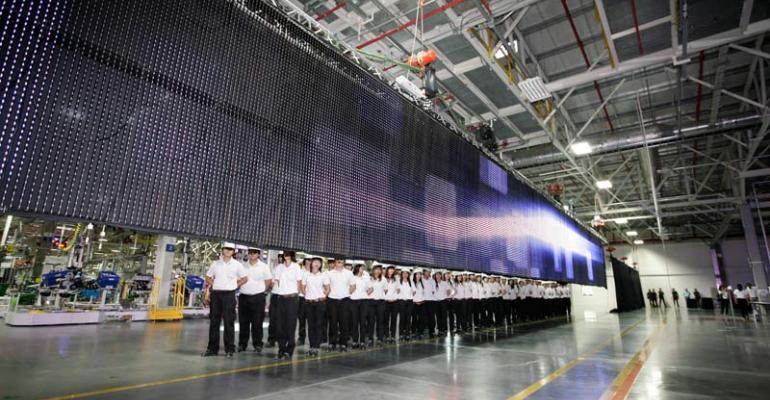RAYONG, THAILAND – Workers at General Motors’ factories here labor under different climate conditions.
Blowing fans and big open doors ventilate the assembly plant. It’s on the hot side, but Thais are used to their country’s high heat.
An adjacent powertrain plant is all but hermetically sealed. It is a controlled climate to keep particles away from the engines being built. Air-conditioning wrings out humidity so as not to impair the precision tooling.
“Workers here like to go outside on their breaks,” says David Clarkson, who oversees the powertrain facility. “One of the biggest complaints is that it’s too cold in here.”
But no one at the next-door assembly plant complains of the heat. So it goes in Thailand, No.14 among vehicle-making nations. Thailand is proud of its ambitious auto industry that began with a Toyota plant 50 years ago.
One of the newer facilitities is the GM powertrain plant in the Rayong province. GM Thailand invested 6 billion baht ($200 million) in the auto maker’s first diesel-engine plant in Southeast Asia. GM makes an internal-combustion version in Korea.
The GM powertrain plant is the only one in the world to make diesel 4-cyl. Duramax engines for the Colorado pickup trucks and Trailblazer SUVs. GM Thailand exports about half of those.
The engine factory will employ more than 650 workers by the end of the year, adding to GM Thailand’s existing workforce of 4,500.
The plant built its first pre-production engine in late 2010. It started regular production of 2.5L and 2.8L engines last September.
“Our employees come from diverse backgrounds,” says Clarkson, whose GM career began in Flint, MI, at so-called “Buick City,” now a shadow of the manufacturing complex it once was. “Some of them came right out of school, some worked at 7-Eleven stores. The biggest challenge was teaching them how to make engines.”
Some team members went to Korea, Japan and Germany for months of training in preparation for the new factory start-up in Thailand.
“We are up to three shifts, six days a week, and can produce 130,000 engines a year,” Clarkson says. “It is unprecedented for a new powertrain plant to be at that level so quickly.”
About 40% of the workers are women, he notes. “Diversity is important to GM. We see a diverse workforce as a competitive advantage.”
The new facility brings GM’s investment in Thailand to 39 billion baht ($1.3 billion).
The auto maker began selling Chevrolets in Thailand 19 years ago. The assembly plant opened in 2000, creating a regional manufacturing hub, says Martin Apfel, who heads for GM Thailand.
GM vehicles built in Rayong are exported to 16 markets on four continents.
GM says its Thailand domestic sales have grown from 2,216 units in 2001 to 31,595 in 2011.
The assembly plant can build up to 180,000 vehicles a year. In addition to the Colorado and Trailblazer, the facility makes the Chevrolet Cruze and Aveo cars, as well as the Captiva cross/utility vehicle. The Chevy Sonic compact joins the list later this year.
“The only thing for sure is that we will continue to grow,” says Apfel, a Germany native who graduated from high school in New Mexico and began his GM career as a labor lawyer in 1989. He has worked in Thailand for two years.
“This region has unbelievable growth opportunities,” he says.





